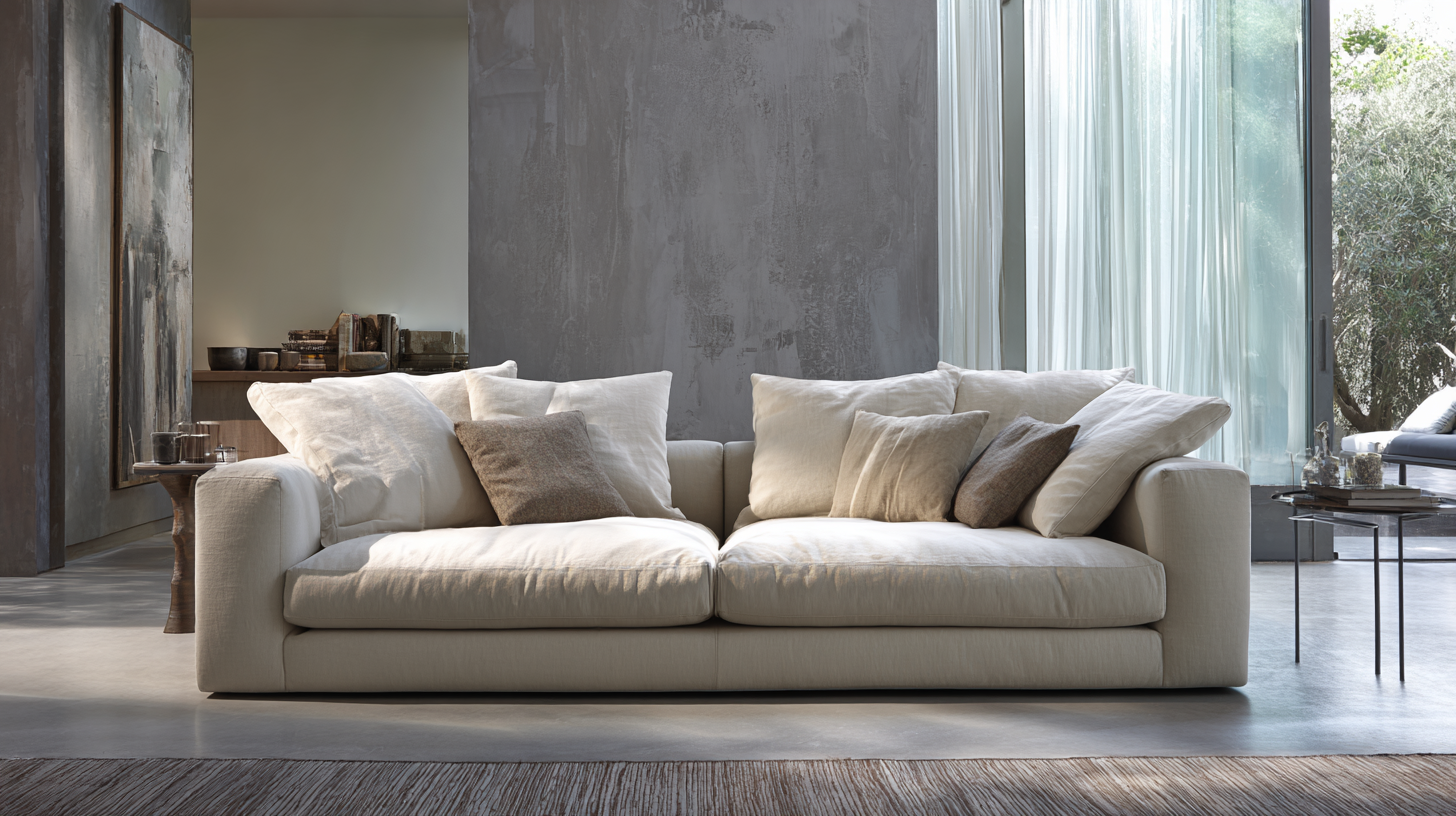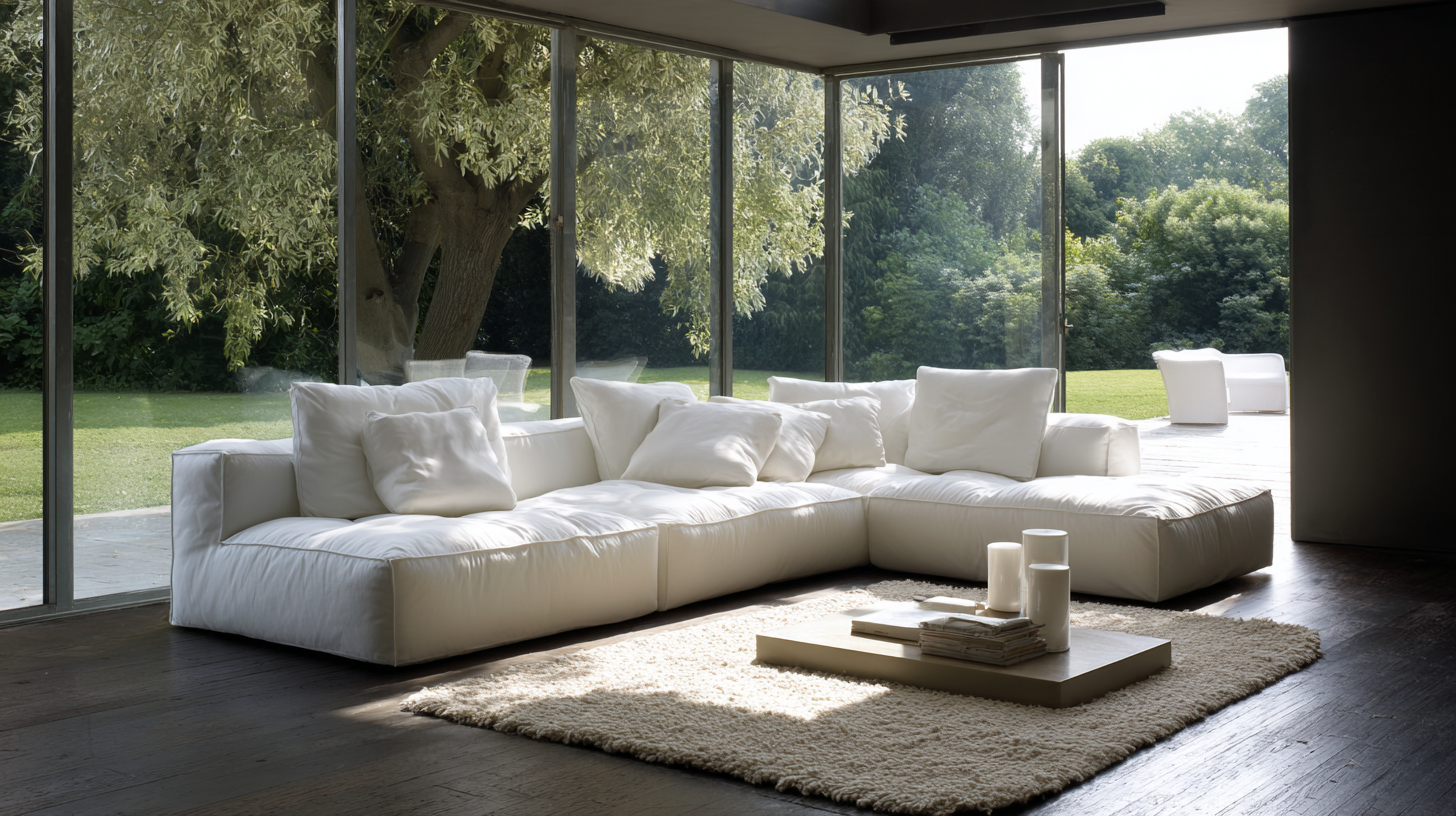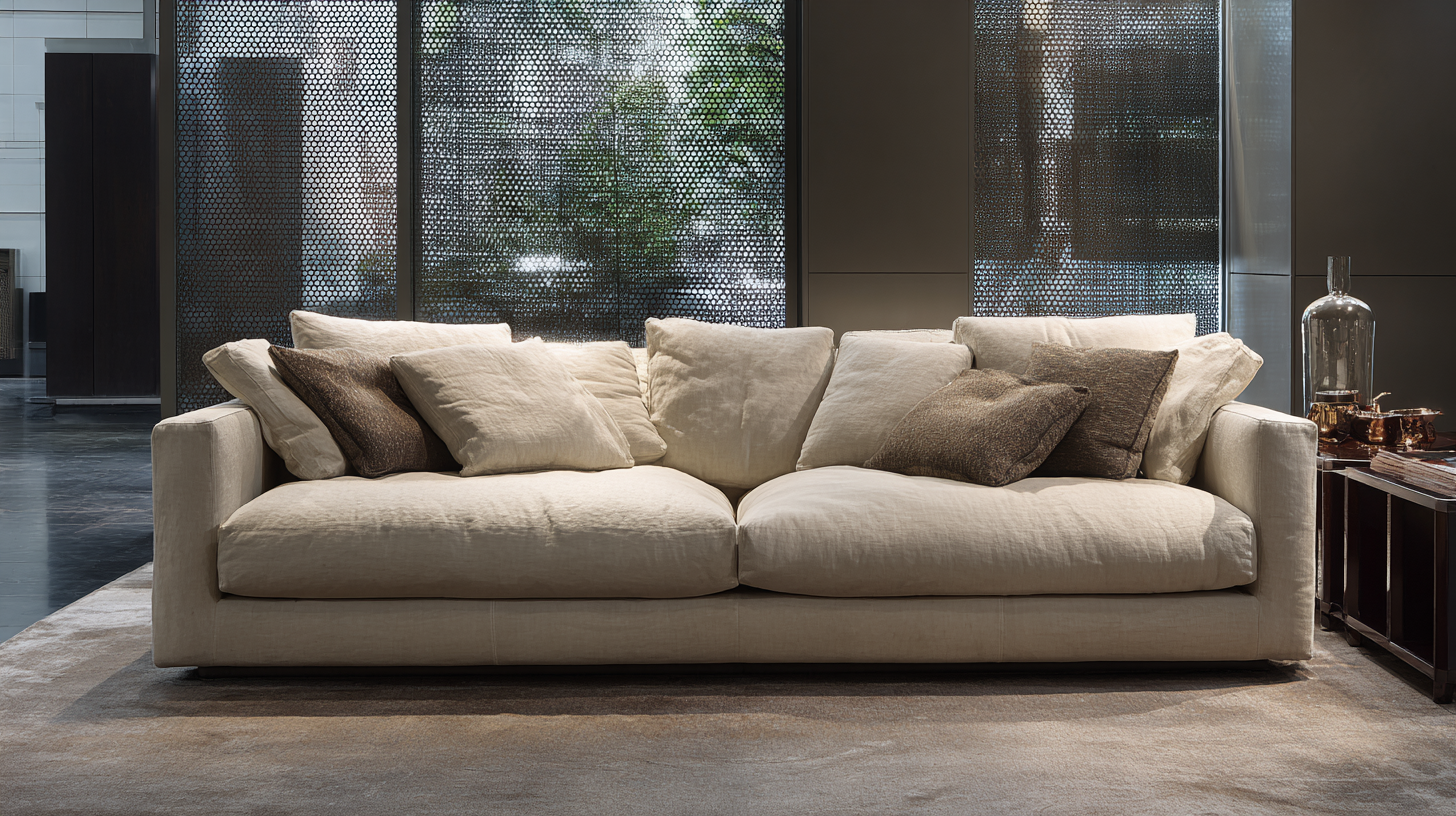In recent years, the trend of minimalistic living has prompted homeowners to seek out innovative furniture solutions tailored for small spaces, with the "Low Sofa" emerging as a popular choice. According to a report by Grand View Research, the global sofa market reached a value of approximately $80 billion in 2020 and is expected to grow at a CAGR of 4.5% through 2028, driven by the rising demand for stylish yet functional furniture. As urban living spaces become increasingly limited, the need for low-profile seating options that maximize both comfort and aesthetics has never been more critical.

However, homeowners face several challenges when selecting the best low sofa, including space constraints, style preferences, and material choices. Understanding these challenges is essential for making an informed decision that enhances both living space and quality of life.
When selecting the best low sofa for small spaces, homeowners often overlook critical space constraints. A recent report by the American Institute of Architects highlighted that around 87% of homeowners prioritize functionality in their living spaces, especially in homes with limited square footage. Assessing your small living area begins with taking accurate measurements of your room, including doorways and adjacent furniture. This will help determine the maximum dimensions for a low sofa while ensuring it complements the existing layout.
**Tip:** Create a floor plan using graph paper or digital tools. This visual representation can assist in experimenting with different sofa placements before making a purchase.
Additionally, consider the overall aesthetic of your small space. Low sofas often offer a more open feeling, making them ideal for compact living areas. According to a study by the National Association of Home Builders, furniture that is proportional to the room size creates a more cohesive and spacious environment. Don't forget to think about the sofa's height; low profiles can draw the eye down, making ceilings appear taller.
**Tip:** Choose a sofa in a lighter color or fabric pattern, as this can enhance the perception of space, making your small living area feel more inviting and airy.
 When selecting the best low sofa for small spaces, homeowners should prioritize key features such as comfort, style, and functionality. Comfort is paramount, especially for smaller living areas where the sofa might be the main seating option. Look for pieces that offer ample cushioning and ergonomic support. Sofas with modular designs can also enhance comfort, allowing you to customize the layout to fit your specific needs and preferences.
When selecting the best low sofa for small spaces, homeowners should prioritize key features such as comfort, style, and functionality. Comfort is paramount, especially for smaller living areas where the sofa might be the main seating option. Look for pieces that offer ample cushioning and ergonomic support. Sofas with modular designs can also enhance comfort, allowing you to customize the layout to fit your specific needs and preferences.
Style is equally important in a small space, as the right low sofa can serve as a focal point that enhances the overall aesthetic of the room. Opt for designs that blend well with your existing decor while maximizing visual flow. Neutral colors or light fabrics can create an illusion of space, while unique textures or subtle patterns add character without overwhelming the environment.
Functionality cannot be overlooked, especially in tighter areas. Sofas with built-in storage solutions or those that convert into beds are excellent choices for maximizing utility. Additionally, consider options with slim profiles that make the most of limited square footage while still providing comfort and style. By focusing on these key features, homeowners can find the perfect low sofa that complements their small spaces beautifully.
When selecting the best low sofa for small spaces, the choice of fabric is critical. According to a recent study by the Furniture Today market research, approximately 60% of consumers prioritize durability in furniture fabric, particularly when designing small living areas where every piece counts. Materials like microfiber and upholstery blends are popular for their easy maintenance and resilience, making them ideal for busy homes with limited space. For homeowners with pets or children, choosing stain-resistant and durable fabrics can significantly extend the life of their furniture.
Moreover, aesthetic appeal is just as important as durability. The American Home Furnishings Alliance reports that 70% of consumers believe the furniture's fabric should match their interior decor. Textured fabrics like boucle or linen can add a visual depth that enhances the overall atmosphere of compact spaces. Selecting the right color and pattern not only influences the sofa’s appearance but also affects the spatial perception of the room. Light colors can make a small area feel larger and more inviting, while bold patterns can serve as a focal point, drawing attention away from the room's dimensions. Thus, balancing durability with aesthetics is essential for homeowners looking for the perfect low sofa that complements both their lifestyle and their living space.
This chart illustrates the distribution of preferences among homeowners when selecting materials for low sofas suited for small spaces. The selection of fabric significantly affects both the durability and aesthetic appeal of the sofa.
When selecting a low sofa for a small space, homeowners often overlook the power of color and design in creating an illusion of space. One effective strategy involves using lighter shades such as pastels or off-whites, which can make a room feel more airy and open. By incorporating a low sofa in these hues, the furniture blends seamlessly with the walls, drawing the eye upward and expanding the perceived height of the room. This visual trick can be particularly beneficial in compact living areas, where every inch counts.
In addition to color, the design of the sofa plays a crucial role in maximizing space efficiency. Opting for a low-profile sofa with clean lines not only enhances modern aesthetics but also promotes a sense of openness. Avoiding bulky, overstuffed designs helps maintain an uncluttered look. Furthermore, integrating multifunctional pieces, such as a low sofa that can double as a storage unit or includes slim armrests, can significantly enhance usability in small spaces. By thoughtfully considering color choices and design elements, homeowners can create a harmonious environment that feels both spacious and stylish.
| Challenge | Impact on Space | Design Tips | Color Considerations |
|---|---|---|---|
| Size Constraints | Limited seating and traffic flow | Choose visuals that create openness | Light colors to enhance perception of space |
| Style Compatibility | Cluttered aesthetics | Select minimalist designs | Use monochromatic color schemes for harmony |
| Functionality Needs | Inadequate for multiple uses | Incorporate multi-functional furniture | Bright colors for accent pieces |
| Accessibility | Difficult maneuvering in tight areas | Leave adequate space for movement | Use contrasting colors to define pathways |
| Durability | Frequent replacements needed | Invest in high-quality materials | Neutral colors for longer-lasting appeal |
When it comes to selecting the perfect low sofa for small spaces, budgeting wisely is crucial. With the ever-growing choices in the market, homeowners can often feel overwhelmed. Industry reports suggest that the average cost of a quality low sofa can range from $300 to $1,500, depending on materials and design. To navigate this cost spectrum effectively, it's essential to clearly define what features matter most for your needs—be it style, comfort, or durability.

Tips for maximizing your budget include researching different materials to find alternatives that provide similar aesthetics at a lower price point. For instance, opting for polyester over leather can significantly reduce costs while still offering a chic appearance. Additionally, shopping during clearance sales or off-season can result in considerable savings; many retailers offer deep discounts on furniture when introducing new collections.
Another strategy is to consider pre-owned options. According to a recent survey, nearly 50% of homeowners have found their favorite piece by exploring thrift shops and online resale platforms. These venues often house unique low sofas that not only fit small spaces but also come at a fraction of the retail price, allowing for both creativity and budget adherence in your home décor journey.
